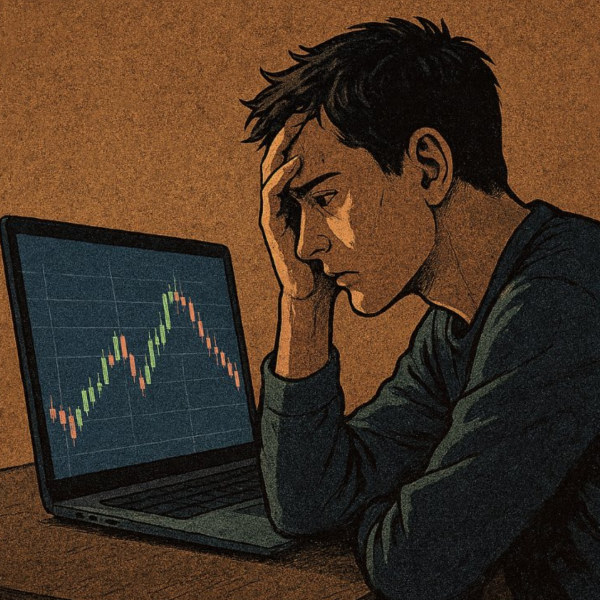Despite all the external noise, Nvidia’s stock price still rose after the release of its financial report.
This is a rather impressive report—whether it’s overall quarterly revenue, profits, or the performance of its core data center business, all are very strong. Jensen Huang even stated that Nvidia has $500 billions in undelivered chip orders, and all cloud GPUs are sold out.
Most notably, during the conference call, Jensen Huang responded to external concerns about an AI bubble, stating that he does not see any bubble.
This Nvidia earnings release has attracted much attention, largely due to the divergence of opinions externally. On one side, there are massive short positions led by figures like Michael Burry, the prototype for "The Big Short"; on the other, optimism and buying from investment banks like DA Davidson, which once shorted Nvidia.
Nvidia thus finds itself caught between two polarized judgments. There seems to be little consensus on Nvidia’s prospects or even the future of the entire AI industry.
01
Let’s first take a look at Nvidia’s financial report.
Nvidia released its financial report for the third quarter of fiscal year 2026, ending October 26 this year.
The entire report exudes positivity, with revenue, profits, and other metrics exceeding analysts’ expectations. On top of that, the company remains optimistic about its outlook.
The report shows that Nvidia’s revenue for the third quarter was $57.01 billions, far exceeding analysts’ estimate of $54.92 billions; net profit reached $31.91 billions, a year-on-year increase of 65%.
After adjustments, Nvidia’s earnings per share for the third quarter were $1.3, while the market had previously estimated $1.25.
Specifically, the data center remains Nvidia’s pillar, and once again, its performance hit a record high.
Data center revenue for the third quarter was $51.2 billions, accounting for nearly 90% of total revenue and up 66% year-on-year, far exceeding analysts’ estimate of $49 billions. Within the data center business, the “computing” segment contributed the most, generating $43 billions in revenue.
This growth was mainly driven by sales of the GB300 series chips. GB300 is Nvidia’s new generation AI computing platform, equipped with 72 Blackwell Ultra AI GPUs and 36 Grace CPUs based on the Arm Neoverse architecture. It was officially announced in May this year and entered mass production in the third quarter.
During the conference call, Nvidia CFO Colette Kress revealed: “GB300 sales exceeded GB200, contributing about two-thirds of Blackwell’s total revenue. The transition to GB300 has been very smooth.”
In addition to “computing,” the “networking” segment within the data center business also contributed $8.2 billions in revenue.
According to the report, although Nvidia’s other businesses accounted for a small proportion in the third quarter of fiscal year 2026, they all performed well. For example, gaming business quarterly revenue was $4.3 billions, up 30% year-on-year; professional visualization revenue was $760 millions, up 56% year-on-year; automotive and robotics contributed $590 millions, up 32% year-on-year.
To understand how crazy all this is, just look at the period before this AI wave. Three years ago, in November 2022, Nvidia released its financial report for the third quarter of fiscal year 2023, with quarterly revenue of $5.93 billions, a year-on-year decrease of 17%. In other words, in three years, Nvidia’s quarterly revenue has ballooned tenfold.
It could also be said that Nvidia’s total revenue three years ago is now equivalent to about 10% of its current revenue outside the core data center business.
02
After Nvidia released its financial report, the market responded positively, with the stock price rising more than 5% after hours.
This was not easy, as this Nvidia earnings report drew much attention mainly because concerns about an AI bubble have reached unprecedented heights.
Judgments about Nvidia’s future are highly polarized.
On one hand, many institutions are optimistic about Nvidia, choosing to buy or give positive forecasts.
The most dramatic is investment bank DA Davidson, which suddenly upgraded Nvidia’s rating from “neutral” to “buy” and raised its target price from $195 per share to $210 per share.
This is a huge shift in attitude. DA Davidson was previously bearish on Nvidia, with its analysts warning that Nvidia’s stock price could plummet by as much as 48%.
In its new report, DA Davidson stated: “Our increasingly optimistic view of AI computing demand growth has replaced our concerns about Nvidia.”
On the other hand, there are plenty of opposing voices.
The most attention-grabbing is Michael Burry, the prototype for the movie "The Big Short," whose Scion Asset Management has heavily shorted Nvidia.
Burry himself broke two years of silence, posting on X with a picture of his character in "The Big Short" staring at a computer, captioned: “Sometimes, we can see the bubble. Sometimes, we can do something about it. Sometimes, the only way to win is not to play.”

Although he didn’t explicitly say what “bubble” he was referring to, the general consensus is that he meant the AI bubble.
Burry is not necessarily always right. He successfully predicted the subprime crisis back then, but a few years ago he also warned that meme stocks and cryptocurrency buyers would face a “crash of the century,” for which Elon Musk mocked him as a “broken clock” that’s always wrong.
But who can ignore this signal now? Especially at a time when talk of an AI bubble is intensifying, and as the “hub” of the entire Silicon Valley AI industry, Nvidia’s every move is under the spotlight.
03
Nvidia naturally has to face external controversy. In this earnings call, questions about the AI bubble inevitably came up.
Jensen Huang neither avoided nor dodged the issue, but directly gave a negative response:
“There’s a lot of talk about an AI bubble, but from our perspective, the situation is completely different from the internet bubble era. AI is transforming existing workloads, and we do not see the existence of an AI bubble.”
Nvidia’s confidence comes from very strong GPU sales. Huang stated in the report that Blackwell chip sales far exceeded expectations, and all cloud GPUs are sold out. “Whether for training or inference, demand for computing power is accelerating and growing exponentially. We have entered a virtuous cycle for AI.”
During the conference call, he also revealed that Nvidia currently holds $500 billions in undelivered chip orders, with schedules extending into 2026, including the next-generation Rubin processor to be mass-produced next year.
In Huang’s view, the AI ecosystem is rapidly expanding, with more new foundational model builders and more AI startups emerging across more industries and countries. AI is everywhere and omnipotent. Therefore, concerns about an AI bubble are unnecessary.
Looking ahead, Nvidia confidently gave an optimistic forecast.
Nvidia expects fourth-quarter revenue to be about $65 billions, exceeding analysts’ expectations of $61.66 billions.
The after-hours movement of Nvidia’s stock price also shows that the release of this financial report, including the performance during the conference call, has to some extent eased market tensions.
Investing.com senior analyst Thomas Monteiro commented: “This answers many questions about the current state of the AI revolution, and the conclusion is simple: for the foreseeable future, whether from the perspective of market demand or production supply chains, AI is far from reaching its peak.”
But this does not mean that tensions will disappear immediately.
Some analysts say this earnings report may not be enough to quell concerns about an AI bubble.
In the third quarter, Nvidia significantly increased its investment in leasing back its own chips, in order to rent them from cloud customers who could not lease them out. The total value of such contracts reached $26 billions, doubling from the previous quarter.
Cloud giants including Microsoft and Amazon are investing tens of billions of dollars in AI data centers. Some investors believe these companies are “artificially inflating” earnings by extending the depreciation period of AI computing equipment (such as Nvidia chips).
In the third quarter, Nvidia’s business concentration further increased, with its four largest customers contributing 61% of sales, up from 56% in the previous quarter.
The company is also continuously increasing its bets on AI companies, investing tens of billions of dollars in enterprises that are often also its key customers, raising concerns about an “AI economic cycle dependency.”
In addition, there are many uncontrollable factors that may limit Nvidia, such as geopolitical impacts. It is still excluded from the Chinese market and is now turning its sights to the Middle East, having recently been approved to export up to $1 billions worth of chips there.
Another issue is the actual utilization of GPUs in the future. eMarketer analyst Jacob Bourne stated:
“Although demand for GPUs remains huge, investors are increasingly concerned about whether hyperscale cloud providers can actually utilize this computing power quickly enough. The key issue is whether physical bottlenecks such as power, land, and grid access will limit how quickly this demand can translate into revenue growth in 2026 and beyond.”
The debate over the AI bubble and Nvidia’s future will continue.




